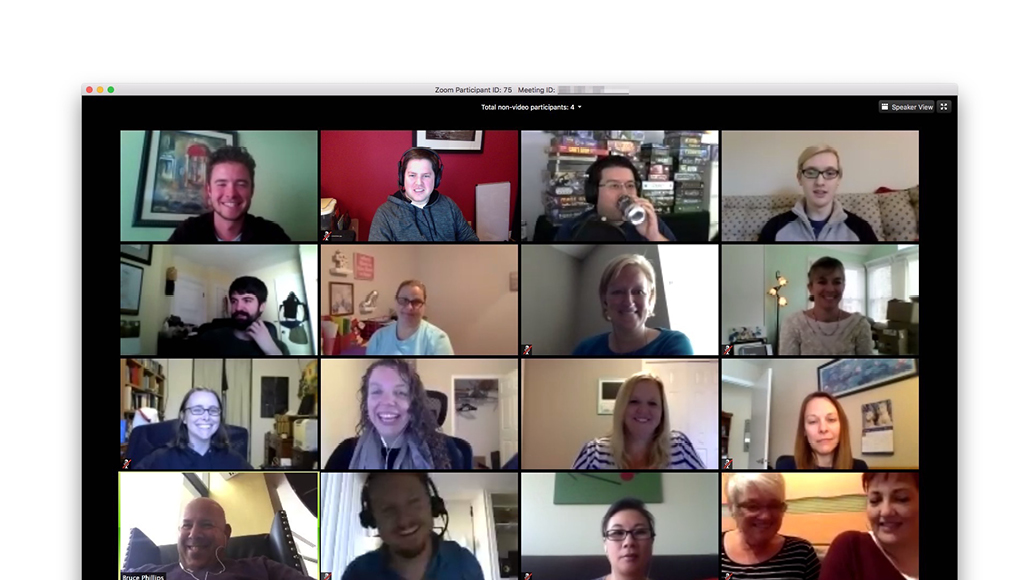How to Improve Productivity at Work- Part 1 of 2

Since I joined Weploy earlier this year, I’ve been talking with small to medium business leaders across a wide range of industries. My goal was to understand how customers are using Weploy and what drives them to hire temporary staff. It was immediately clear that they are all trying to increase workforce productivity by boosting agility. But it was how these companies are realising success that I thought was so interesting… In fact, there seemed to be two main strategic approaches that I wanted to share.
Optimising the workplace for Productivity
I think we can all agree increasing workforce productivity is a general business goal - and that doesn’t mean “just doing more with less” - but actually trying to improve outcomes for both the business and the employees. A quick search shows lots of opinions and articles on how to boost productivity - from improving recruitment, upskilling through training to offering flexible working. All I’m sure are true, but for me they miss the mark a little. The reason? They don’t address the main reason why productivity is so hard - that operating environments are more uncertain than ever, and disruption is the new normal.
So here are two core approaches that I’ve seen companies adopt that are helping them become more agile.
- Outcomes focused project-based working
- Breaking down roles into activities and optimising common tasks
Each approach deserves a little attention so I’ll look at each one separately in this series, beginning with the first.
Project-based Organisations
There are two common types of organisational structure, project-based organisations (for example in the construction or entertainment industries) and functional structures where companies are organised by departments: marketing, finance, sales. Since the early 80’s we’ve seen hybrid structures emerge that try to realise the benefits of project-based working within functionally based structures…. First it was the matrix, and more recently “Agile” become the buzzword that everyone was using. (For those wanting a great explanation of why Agile is not likely to be the right approach for your business I suggest watching this video of Peter Cappelli who sums it up perfectly.)
Leaving the hype to one side, we do see functionally structured organisations using projects more and more. Good examples are Fonterra, Google and LinkedIn - all of whom provide portals to help employees access cross functional teams to solve complex problems.
The reason for adopting this approach I’m hearing, is because the degree of certainty a business leader has in respect to forecasting customer demand, mapping out the competitor landscape or understanding how emerging technology will impact their business is lower than ever before. It’s not that change is happening more, it’s that change is taking place faster than ever before.
The traditional ways of building a business strategy don’t cut it when the goal posts are moving in ways you can’t predict. And this is where project-based working is providing organisations with a competitive advantage. By offering the ability for employees to tackle tricky problems within project teams there are two big benefits. First - they increase the diversity of thinking; Engineers, marketers and finance professionals working together with a common goal. All of the research shows that the broader the skill set and approaches to problem solving - the better the outcomes. Second, there is a clearly defined goal or outcome that the team takes iterative steps towards delivering - often there is no ideal solution for complex, multi-dimensional problems so trial and error is the best way forward.
So how to adopt this project-based approach?
Scaling up with on-demand staff during times of need may be the most cost effective way for small businesses to gain the benefits seen from project-based work. Either way, when I’ve spoken with business leaders that are introducing project based working models there seem to be a few golden rules:
● Executive sponsorship and management buy in
Project teams need the autonomy to try things and fail fast. This means the executive team have to be aligned with the strategy and individual managers understand project based work will take up some of their teams time. Before any project based working kicks off this needs to be communicated and any questions or concerns resolved
● Technology tools for intra-team communication
Project teams work fast and there could be multiple activities happening in parallel - Project management tools are therefore essential. At Weploy we use Asana as a way to keep track of project based work, but to get it working efficiently means training - just buying the tool is not enough.
● Structured and consistent stakeholder management
Someone in each project team has to be in charge of stakeholder communication. This really can be the difference between success and failure. As project teams are working fast, pulling resources in and dropping things that aren’t working, keeping management and relevant stakeholders in the loop means consistent updates that outline progress towards the agreed deliverables.
To Conclude
In conclusion - I’ve highlighted how Project-Based Working is the first big trend I’m seeing take place in successful businesses today from the big tech giants through to local small businesses, explained why it works and how to adopt this approach in your workplace. In the next part of the series, I’ll look at how companies are redefining the job role to find new efficiencies.

A Gartner survey reveals 88% of organisations have encouraged or required employees to work from home due to Coronavirus, enforcing a global ‘Work from Home experiment’ which none of us saw coming and nobody had planned for.

Best Practices for Customer Service Agents in the New Normal
If businesses want to survive in the post-COVID world, they're going to need to prioritise a loyal customer base. Indeed, relying on your customers is now more important than ever with unprecedented challenges coming up on a regular basis.

Entrepreneurship is not for everyone. Some people think of big name entrepreneurs – like Richard Branson, Elon Musk or Jeff Bezos and either gain inspiration or create unrealistic expectations.
Streamline your hiring
Business support staff with no hidden fees. Start hiring anytime.